VanderbiltCupRaces.com Profile: Harry Payne Whitney
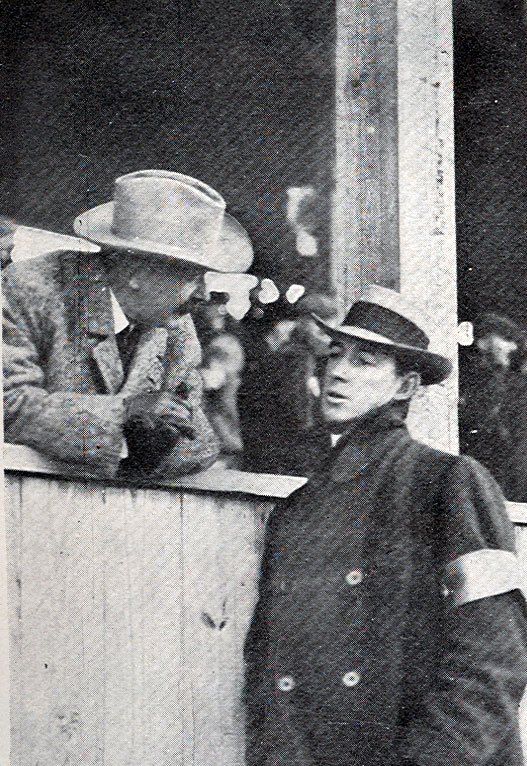
In a new series, profiles and images of important people associated with the Vanderbilt Cup Races, Long Island Motor Parkway and/or Long Island automotive history are featured. First in the series is a profile of Harry Payne Whitney, the first "first vice-president" of the Motor Parkway, a judge and director of the 1909 Vanderbilt Cup Race and was married to William K. Vanderbilt, Jr.'s cousin Gertrude Vanderbilt.
Enjoy,
Howard Kroplick
Harry Payne Whitney (1872-1930)
Harry Payne Whitney (April 29, 1872 – October 26, 1930) was an American businessman, thoroughbred horse breeder, and member of the prominent Whitney family.
Early years
Harry Payne Whitney was born on April 29, 1872 in New York City, he was the eldest son of Flora Payne and William C. Whitney (1841–1904), the very wealthy businessman and United States Secretary of the Navy. Harry was the older brother of William Payne Whitney (1876–1927). His sister, Pauline Payne Whitney (1874–1916), was married to Almeric Hugh Paget, 1st Baron Queenborough (1861–1949), and his youngest sister, Dorothy Payne Whitney (1887–1968), was married Willard Dickerman Straight (1880–1918) and later, Leonard Knight Elmhirst (1893–1974), after Straight's death.
Harry Payne Whitney studied at Groton School in Groton, Massachusetts then attended Yale University, graduating with a law degree in 1894. He was a member of the Skull and Bones. In 1904, after the death of his father, he inherited $24,000,000, and in 1917, he inherited approximately $12,000,000 from his uncle, Oliver Hazard Payne.
Sportsman
An avid sportsman, he was a ten-goal polo player. His love of the sport was inherited from his father who had been involved with polo when it was first organized in the United States in 1876 by James Gordon Bennett, Jr. H. P. Whitney organized the U. S. polo team that beat England in 1909. "Whitney Field" polo field near Saratoga Springs, New York is named for him. He was also a board member of the Montauk Yacht Club and competed with his yacht Vanitie in the America's Cup. Whitney also served on the board of directors of the Long Island Motor Parkway, built by his wife's cousin, William Kissam Vanderbilt II.
Whitney also enjoyed quail hunting and purchased the 14,000-acre (57 km2) Foshalee Plantation in northern Leon County, Florida from Sydney E. Hutchinson of Philadelphia, Pennsylvania.
Thoroughbred horse racing
Whitney and his horse, Regret
Whitney was a major figure in thoroughbred horse racing. He inherited a large stable from his father (including the great filly Artful and her sire Hamburg, and in 1915 established a horse breeding farm in Lexington, Kentucky where he developed the American polo pony by breeding American Quarter Horse stallions with his thoroughbred mares. He was thoroughbred racing's leading owner of the year in the United States on eight occasions and the breeder of almost two hundred stakes race winners. His leading sire was first Hamburg and then the great sire Broomstick, by Ben Brush. His Kentucky-bred horse Whisk Broom II (sired by Broomstick) raced in England, then at age six came back to the U.S. where he won the New York Handicap Triple. He also owned Upset, who gave Man o' War the only loss of his career.
Whitney had nineteen horses who ran in the Kentucky Derby, winning it the first time in 1915 with another Broomstick foal, Regret, the first filly ever to capture the race. Regret went on to earn Horse of the Year honors and was named to the National Museum of Racing and Hall of Fame. Whitney won the Kentucky Derby for the second time in 1927 with the colt Whiskery. His record of six wins in the Preakness Stakes stood as the most by any breeder until 1968 when Calumet Farm broke the record. Whitney's colt Burgomaster won the 1906 Belmont Stakes and also received Horse of the Year honors. Amongst many, Whitney's breeding operation produced Equipoise and Johren.
Whitney's stable won the following prestigious U.S. Triple Crown races:
Kentucky Derby:
1915 : Regret (voted Horse of the Year)
1927 : Whiskery
Preakness Stakes:
1908 : Royal Tourist
1913 : Buskin
1914 : Holiday
1921 : Broomspun
1927 : Bostonian
1928 : Victorian
Belmont Stakes:
1905 : Tanya (filly)
1906 : Burgomaster (voted Horse of the Year)
1913 : Prince Eugene
1918 : Johren
His Lexington, Kentucky stud farm was passed on to his son, C.V. Whitney, who owned it until 1989 when it became part of Gainesway Farm.
Personal life
On August 25, 1896 he married Gertrude Vanderbilt (1875–1942), a member of the wealthy Vanderbilt family. In New York, the couple lived in town houses originally belonging to William Whitney, first at 2 East 57th St., across the street from Gertrude's parents, and after William Whitney's death, at 871 Fifth Avenue. They also had a country estate in Westbury, Long Island. Together, they had three children:
Flora Payne Whitney (b. 1897)
Cornelius Vanderbilt Whitney (b. 1899)
Barbara Whitney (b. 1903).
Harry Whitney died in 1930 at age fifty-eight. He and his wife are interred in the Woodlawn Cemetery, The Bronx. TIME magazine reported that at the time of his death, Harry Payne Whitney's estate was appraised by New York State for tax collection purposes at $62,808,000 net.
Philanthropy
The benefactor to many organizations, in 1920 H. P. Whitney financed the Whitney South Seas Expedition of the American Museum of Natural History, Rollo Beck's major zoological expedition that sent teams of scientists and naturalists to undertake botanical research and to study the bird population of several thousand islands in the Pacific Ocean.
The Whitney Collection of Sporting Art was donated in his memory to the Yale University Art Gallery.
Harry Payne Whitney
Source: National Museum of Racing and Hall of Fame
Harry Payne Whitney had big shoes to fill both in American society and thoroughbred racing. He made it all look so very effortless.
Born in New York City on April 29, 1872, Whitney was the eldest son of William Collins Whitney and Flora Payne. W. C. Whitney was a colossal figure in the fields of law, politics and military affairs. He also thrived in the stock market, prospered in numerous real estate ventures and achieved the pinnacle of success in many leisurely endeavors, including thoroughbred racing.
When he died in 1904, W. C. Whitney had only been involved in racing for a few years, but he had a phenomenal impact on the sport as a visionary leader. He had also become one of racing’s most successful owners and was in the process of developing an impactful breeding operation.
Like his father, Harry Payne Whitney graduated from Yale University. He went on to study law at Columbia but abandoned that profession in favor of becoming a force in the business world. Among his diversified interests, Whitney became president of the New York Transportation Company and chaired the board of the Hudson Bay Mining & Smelting Co. In 1896, he married Gertrude Vanderbilt, daughter of Cornelius Vanderbilt II, intertwining two of the most prominent families in America.
Whitney, who was a world-class polo player, dabbled in thoroughbred racing as early as 1902 independent from his father. He owned the successful Irish Lad in partnership with Herman B. Duryea. They purchased the colt from John E. Madden, who said: “I developed at least two great horses, Hamburg and Sir Martin, but it is the turfmen that I developed that I take great pride in, among them two champions, Harry Payne Whitney and Herman B. Duryea.”
Upon the death of his father, Harry Payne Whitney immersed himself in racing and breeding. At the dispersal of his father’s bloodstock in October of 1904, Whitney purchased 16 mares and two stallions (including the great Hamburg for $70,000) as the sale’s principal buyer.
It didn’t take long for Whitney to become one of the racing’s most visible and successful participants. He bred 192 stakes winners, a record that stood until surpassed by E. P. Taylor a half-century later. Twenty of the stakes winners he bred were recognized as champions: Burgomaster, Cudgel, Diavolo, Dice, Equipoise (Hall of Fame member), Johren, Maud Muller, Moisant, Mother Goose, Prudery, Regret (Hall of Fame member), Rosie O’Grady, Stamina, Tryster, Vexatious, Whichone, Whiskaway, Whisk Broom II (Hall of Fame member), Whiskery and Top Flight (Hall of Fame member).
Whitney garnered significant acclaim in 1915 when Regret became the first filly to win the Kentucky Derby, which played a major role in raising the profile of the race into a truly national event. It wasn’t until 65 years later when Genuine Risk came along that another filly won the Derby. Four years after Regret’s Derby victory, a Whitney-owned colt named Upset earned a place in racing history as the only horse to ever defeat the mighty Man o’ War, accomplishing the feat in the 1919 Sanford Memorial Stakes at Saratoga.
As an owner, Whitney won 10 races in the Triple Crown series: the Derby with Regret and Whiskery (1927); the Preakness with Royal Tourist (1908), Broomspun (1921), Bostonian (1927) and Victorian (1928); and the Belmont with Tanya (1905), Burgomaster (1906), Prince Eugene (1913) and Johren (1918).
Whitney died at the age of 58 on Oct. 26, 1930, at his Fifth Avenue home in New York City. He had contracted a cold, which developed into pneumonia. Through the shrewd management of his business interests, Whitney had built upon his own inheritance of $10 million and left behind an estate valued at, according to The BloodHorse, $69 million. Before he died, Whitney bred the equine masterpieces Equipoise and Top Flight. Both became all-time greats of American racing while campaigned by Whitney’s son, Cornelius Vanderbilt Whitney, who inherited his father’s racing stable and breeding stock.
Harry Payne Whitney was America’s leading breeder in earnings, individually or in tandem with his son, 11 times. He also topped the list of leading owners eight times.
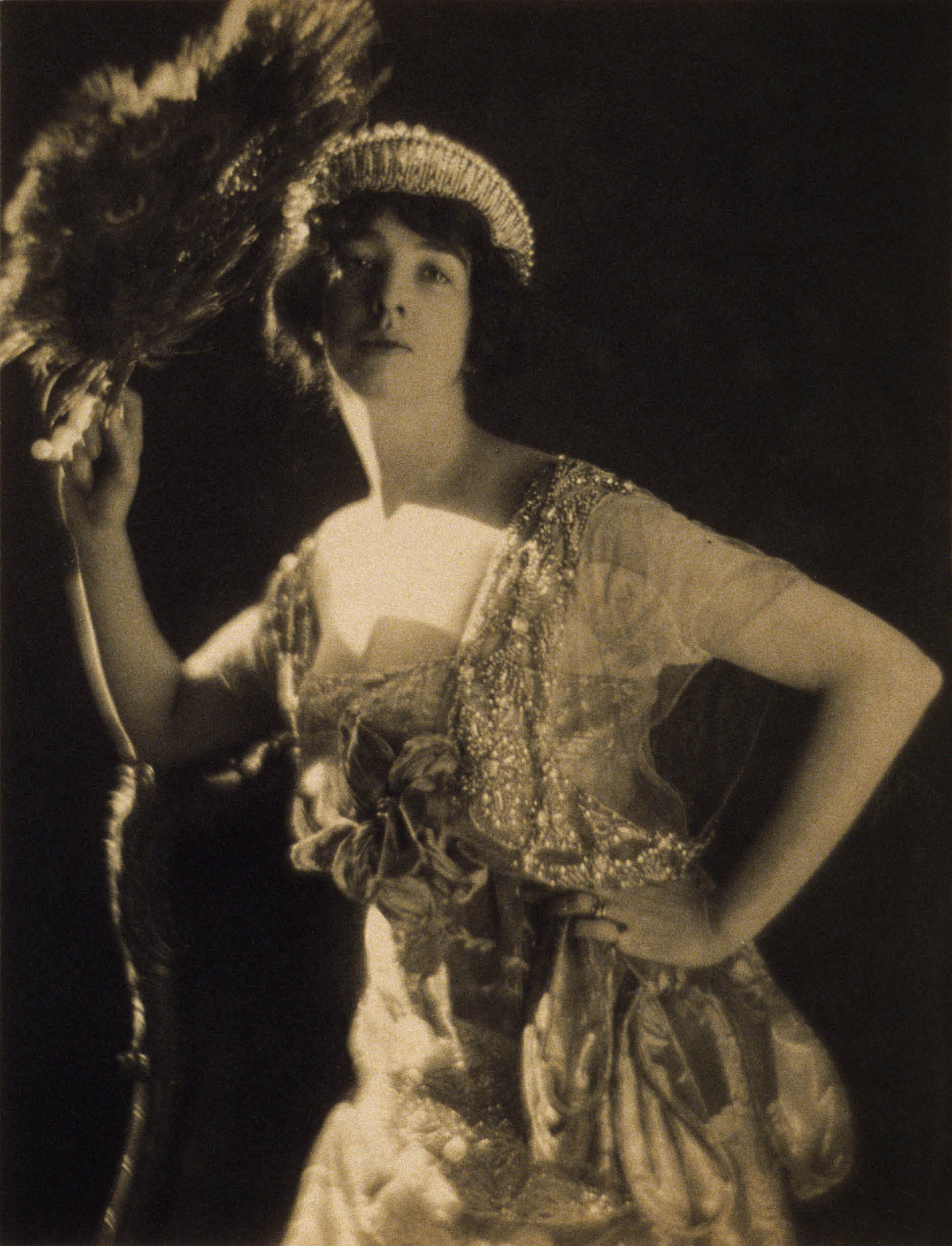
In1896, Harry Payne Whitney married William K. Vanderbilt Jr.'s cousin Gertrude Vanderbilt.

Harry's country house on Long Island. The property is now the Old Westbury Golf and Country Club

Harry's stables are still standing and are part of New York Institute of Technology's campus.
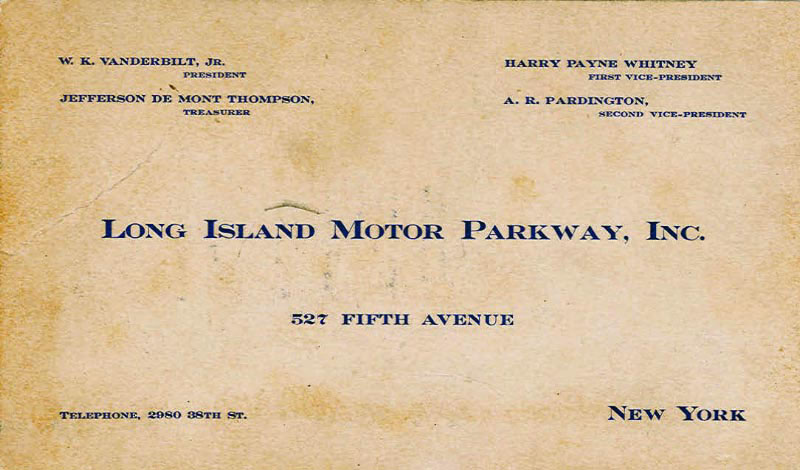
Harry Payne Whitney was the Motor Parkway's first "First Vice-President".
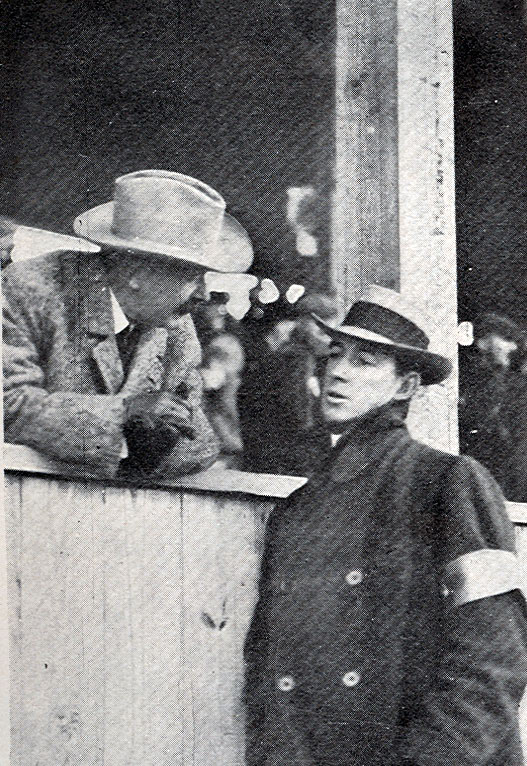
Harry (right) was a director and judge of the 1909 Vanderbilt Cup Race.
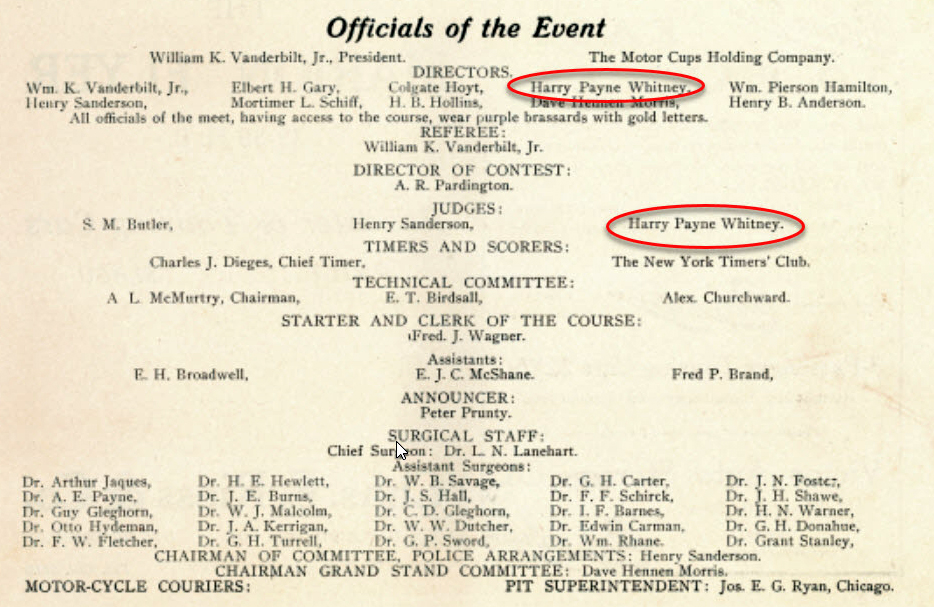
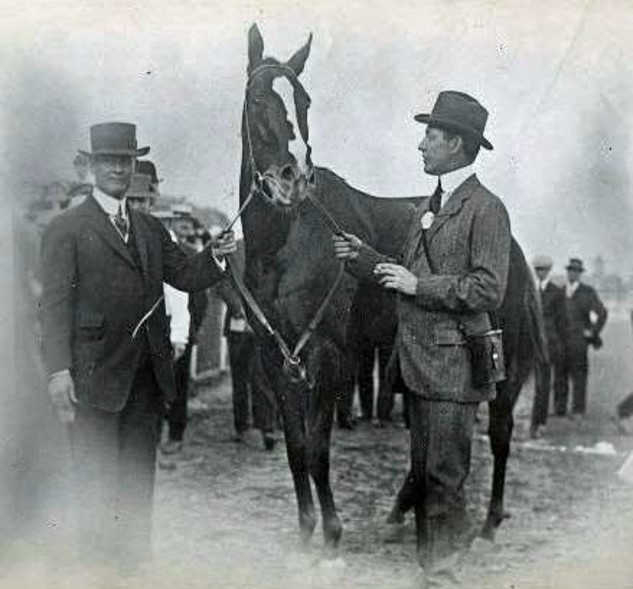
Harry and one of his winning horses.
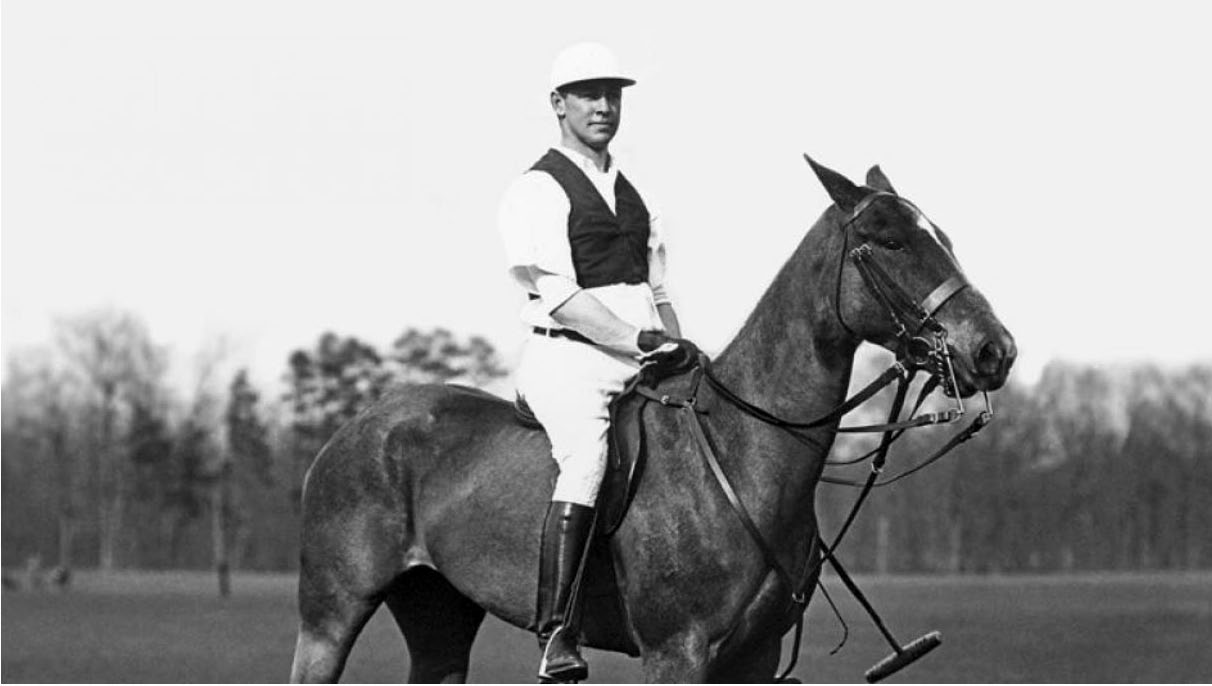
Harry on one of his polo horses.
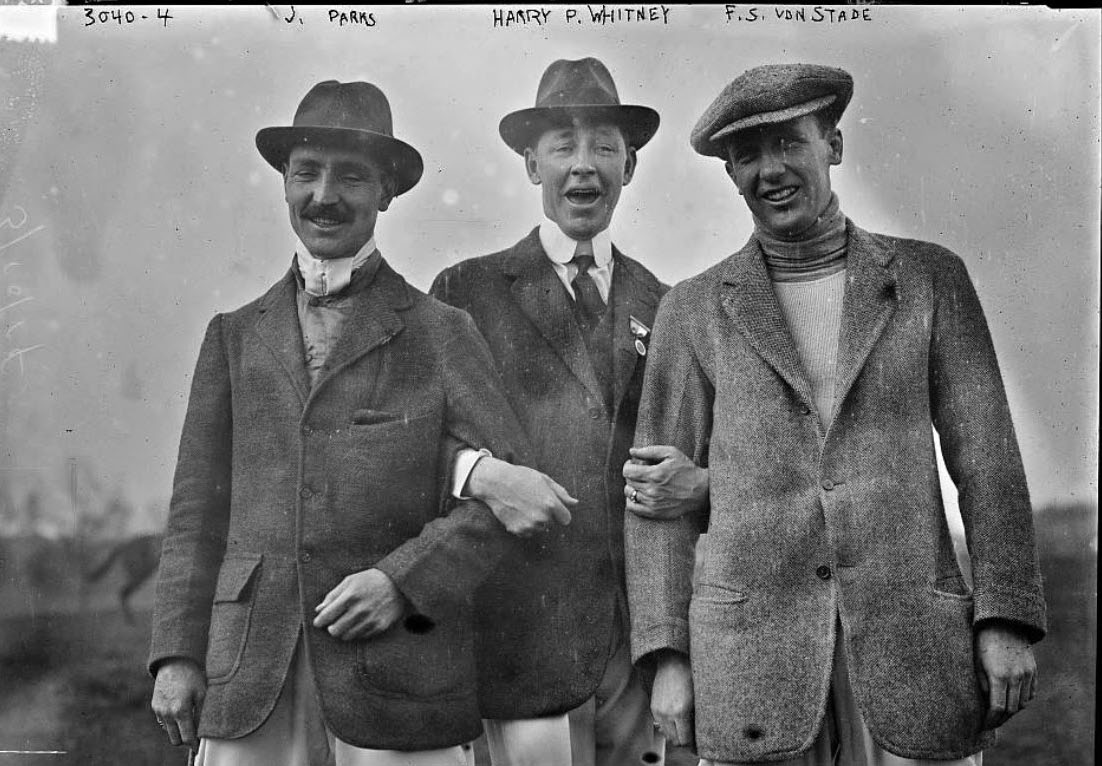
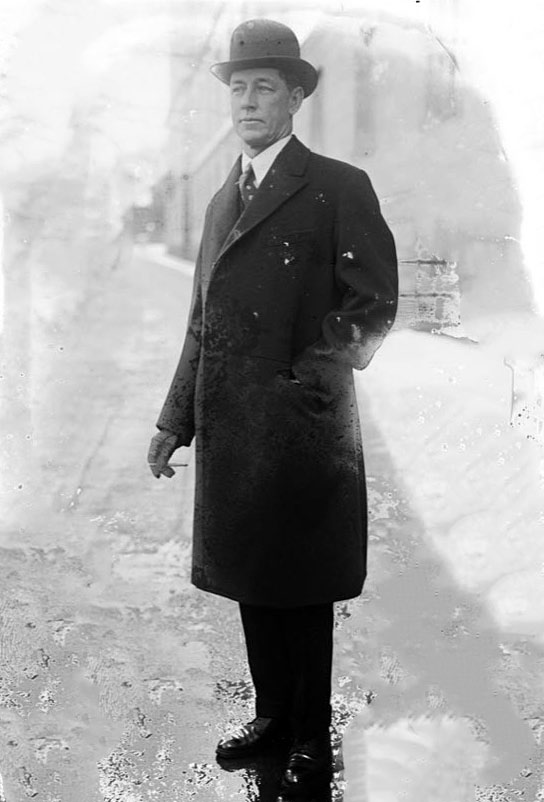

Comments
Great post. The horse / polo history of LI is not understood. So many of these Gold Coast tycoons were into horses in some form or another. Not many people know the oldest club in the US is located in Old Westbury right off of—get ready for it—- Whitney Lane. It’s also known as Hitchcock field, which was another huge polo family, and also Old Westbury residents whose property after hundreds of years is now being decimated to become a graveyard for the Catholic church. So Wonderful. The Hitchcock stables (2 pictures attached) still stand, but not for long. It wasn’t quite as huge as the Whitney stable, which is just tremendous and beautifully preserved although nobody knows it was a stable.
Pic of the Whitney water tower / guard tower is attached. Amazing that this is still standing. The club currently uses this to park the golf carts and all of the other levels are simply storage. I’ve been up there 😊
It’s said that one of the Vanderbilt children committed suicide by jumping off of this tower.
Walker & Gillette c. 1924.
Built for Harry Payne Whitney and wife Gertrude after they gave ‘The Manse’ to son Cornelius Vanderbilt Whitney.
Growing up in Merrick with cousins in Locust Valley, I would frequently ride in the car up Merrick Avenue/Post Avenue with my parents and siblings for visits. The stables were an unforgettable landmark.